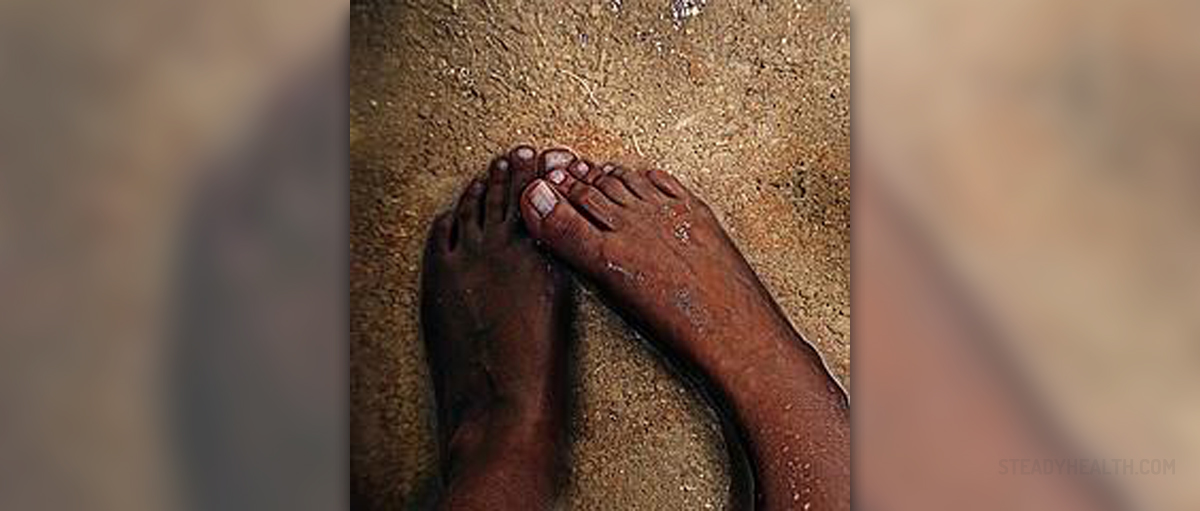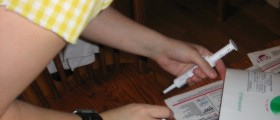
Foot drop is relatively rare condition characterized by weakness and/or paralysis of the muscles localized in the anterior portion of the lower leg. This group of muscles is normally innervated by the peroneal nerve, the one originating from the dorsal branches of the 4th and 5th lumbar and the 1st and 2nd sacral nerves. The damage to the nerve is either unilateral or bilateral. The affected individual have difficulty while stepping forward, his/her knees might be slightly bent and the affected foot lifted a bit higher that normally which prevents its damage that would occur due to dragging it along the ground.
Foot Drop Caused by Damaged Peroneal Nerve
Foot drop may be a condition per se or represents a symptom of other underlying disorders. The problems the patient is facing usually occur as a result of direct damage to the peroneal nerve. Certain activities may significantly contribute to compression of this nerve and subsequent foot drop. For instance, nerve compression is reported more in individuals who habitually cross their legs, those whose occupations involve prolonged kneeling and patients who wear a leg plaster cast that enclose the ankle and ends just below the knee.
Furthermore, foot drop may be closely connected with damage to the muscles of the anterior portion of the lower leg or is a consequence of spinal nerve trauma. Abnormal anatomical characteristics additionally contribute to the disease. And finally, the condition is seen to occur in individuals suffering from Parkinson's disease, muscular dystrophy, amyotrophic lateral sclerosis (ALS), MS (multiple sclerosis) and several more neurological disorders.
The affected individuals simply cannot use the weak leg and experience inability/difficulty in moving the ankle and toes upward. The hallmark of foot drop is steppage gait. Namely, while walking practically all patients drag their toes along the ground. They also bend their knees in an attempt to avoid aforementioned dragging. Most patients start moving in a specific way i.e. develop a so called tiptoe walk when the thigh of the opposite leg is raised abnormally which allows the malfunctioning foot to be raised as well, sufficiently enough not to be dragged along the ground.
The condition may be temporary or permanent which in the long run leads to muscle atrophy and complete loss of function of the affected body part.
Physical Therapy for Foot Drop
Treatment for foot drop is not unique and is modified and adjusted in a way to satisfy individual needs and requirements. It basically depends on the underlying cause of the condition. The goal is to bring the underlying disease under control and restore all the functions that have been lost due to malfunctioning of the peroneal nerve or upper branches of the nervous system innervating the affected area.
Doctors may choose between non-surgical treatments such as foot drop braces/splints or physical therapy and drop foot surgery.
Foot braces and splints keep the weak foot in the most optimal position, not allowing it to be dragged along the ground which significantly improves the characteristic gait these patients develop. However, splinting or wearing braces is not sufficient enough. They only stabilize the foot preventing additional problems but do not deal with the very cause of foot drop.
Physical therapy is an integral part of recovery when damage to the peroneal nerve is reversible and the person has chances to restore function of the affected muscles. Furthermore, physical therapy deals with gait disturbance teaching patients how to walk all over again. Also, by performing a specific set of individually designed exercises one may increase the strength of the affected muscles and prevent their atrophy in the long run. There is a combination of strengthening and stretching exercises patients initially practice with their physical therapist while later, they continue exercising in the privacy of their homes without further supervision. Finally, people who have suffered irreversible damage to the peroneal nerve need to realize that their foot will never restore its function. They focus solely on learning how to walk in such a way not to drag their foot and at the same time not to develop an abnormal gait.
Malfunctioning muscles of the lower leg can be stimulated by a specific technique called functional electrical stimulation (FES). The treatment is based on a release of electrical currents which activate the affected nerve (in this case the peroneal nerve) and may be of great assistance in the entire process of rehabilitation. This treatment modality is usually indicated in patients suffering from spinal cord injury and certain neurological disorders such as MS (multiple sclerosis).
And finally, the underlying cause of foot drop is supposed to be identified and treated correctly. Some disorders blamed for this condition respond well to conservative approach while others require surgery.
To sum up, foot drop is not a common health issue but it may cause disability if damage to the peroneal nerve is severe, permanent and cannot be overcome. However, temporary weakness and abnormal gait resulting from damage to the nerve may be managed with several treatment among which physical therapy definitely plays irreplaceable role.

















Your thoughts on this
Loading...